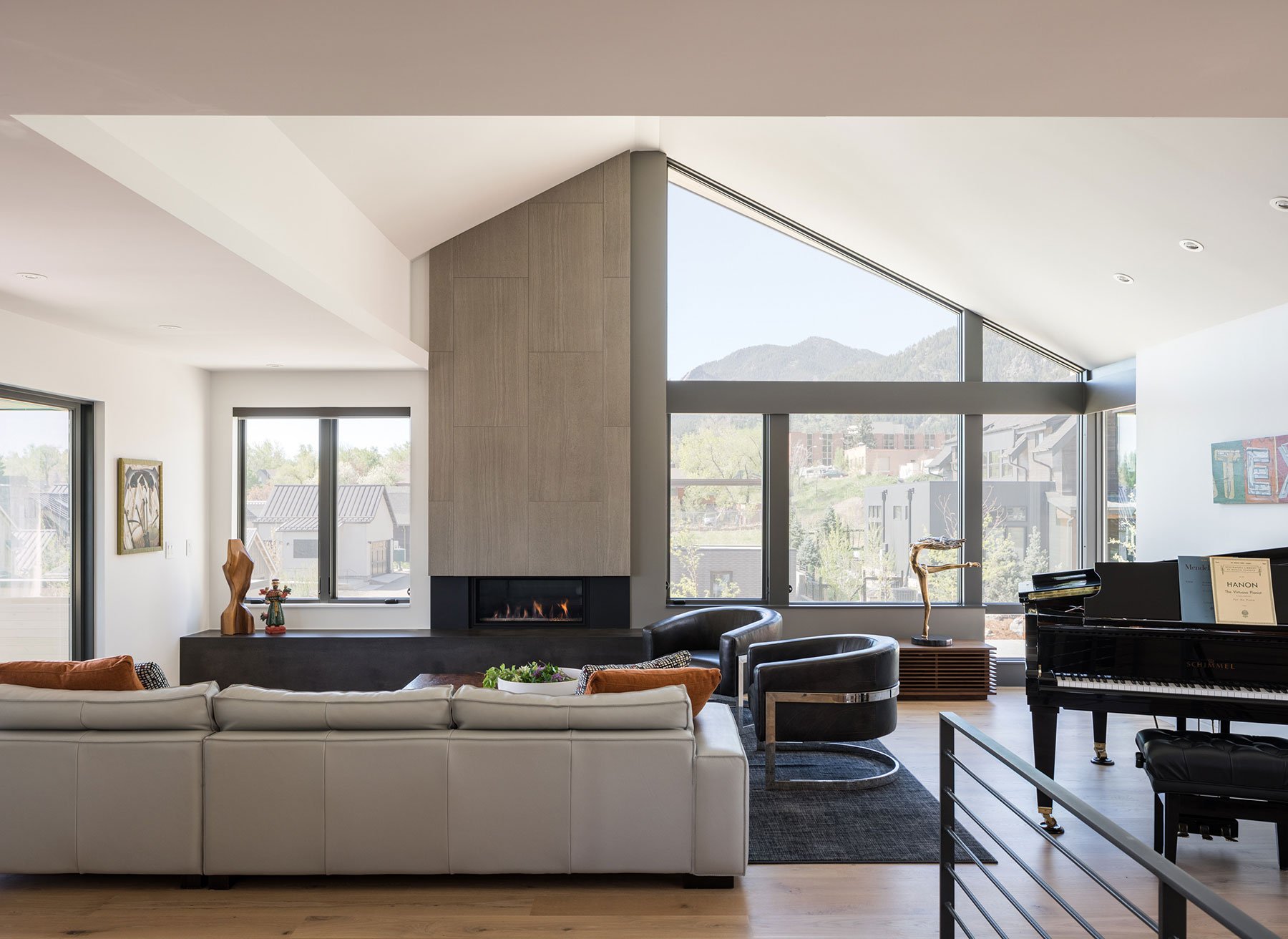Framing the land: architecture in dialogue with the view
When it comes to working with lots with scenic views, each one presents a unique set of challenges. It’s important to remember that you’re designing with the landscape—not against it. I look at the landscape as a collaborator, not just a backdrop. Maximizing views and strengthening the connection to the outdoors begins with the massing and orientation of the house. From there, views can be fine-tuned by carefully framing specific sightlines.
The power of orientation
When siting a home, I often start by identifying the prime spaces where the best views can be experienced. Often, that view is concentrated in a single spot on the property.
Take, for example, Hillside Modern, where the most striking view of the Flatirons was from the east side of the lot. We designed the entire house around locating the living room space from that vantage point, using floor-to-ceiling windows to fully capture the view and wrapping glass around the corner to make the experience feel even more expansive.
In another case, with the Upside-down House, we took a rather unconventional—but incredibly successful—approach, since the Flatirons were only visible from the second floor. We flipped the layout, placing the bedrooms and office on the main level and the great room upstairs to take full advantage of the mountain view.
Massing to frame the landscape
I’m passionate about using the shape and layout of the home to curate different sightlines. While this takes strategic foresight, the reward is limitless, creating more intimate, intentional connections to specific views.
With Golden Vista, the triangular lot sloped to the north and offered views of the foothills to the west, the Flatirons to the north and North Table Mountain to the east. The homeowners' initial instinct was natural—design a rectangular house oriented north to capture the full panorama in each room. However, I suggested a more curated approach: framing distinct views from different spaces to create a richer experience.
The solution was a V-shaped plan: one wing houses the bedrooms, with the primary suite oriented to capture views of the foothills, while the other wing contains the great room, which opens toward North Table Mountain. Connecting the two, we created a covered patio that offers expansive views of both the Front Range and the Flatirons beyond.
For my own home, Blue Mountain Modern, I wanted to create a space that felt truly immersed in nature. To achieve this, I cantilevered the living room 10 feet above the main structure and wrapped it in floor-to-ceiling windows on three sides, creating the feeling of a bird’s nest perched high in a tree.
Embracing unexpected opportunities
I’ve found that it’s often the unexpected, less obvious views that foster the strongest connection to the landscape. While the main windows face east to capture sweeping vistas, I wanted the house to feel open in every direction. So I added a large window looking uphill. It deepens our sense of connection to the surroundings and has become a front-row seat to watch deer, foxes, and turkeys as they make their way through.
Framing specific views with precision
You can create curated focal points by incorporating smaller or strategically placed windows to draw attention to a particular view.
In the Golf Course House, we focused attention on the foreground landscape rather than the neighboring homes by installing 2-foot-tall windows at the desk.
At the Portal House, we designed the entry sequence to offer a quiet moment of surprise—as guests step inside, they're met with floor-to-ceiling windows that open onto a tranquil pocket garden. The homeowners were looking for a peaceful retreat, so introducing a sculpted landscape as the first view helps set a calm, grounding tone for the rest of the home.
Create your dream home
Designing for views is all about quality—not quantity. True connection isn’t just about exposure; for bespoke homes, it’s about framing. To me, the most powerful spaces are the ones that thoughtfully capture the world outside while reflecting the lives within. Let’s design a home that brings your vision—and your surroundings—into perfect focus. Reach out to start the conversation.








